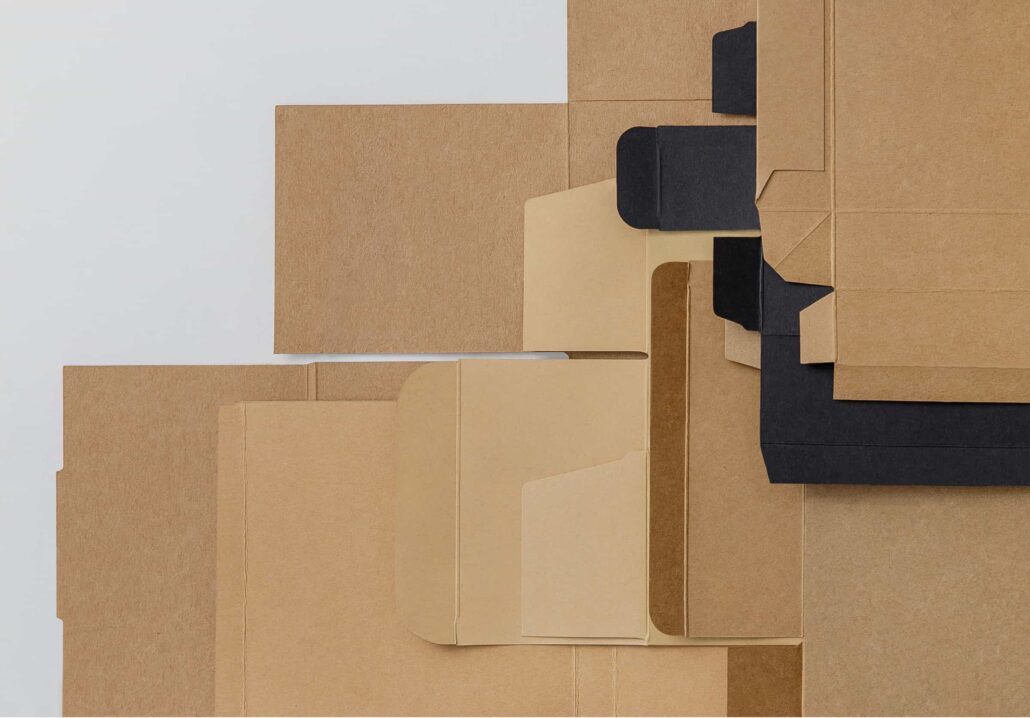I. Introduction
The choice of the right paperboard grade can significantly impact the functionality, aesthetics, and overall success of a packaging solution. In this article, we will explore four popular types of paperboard grades that are widely used in the packaging industry.

II. The Four Popular Types of Paperboard Grades
Type 1: Solid Bleached Sulfate (SBS)
Solid Bleached Sulfate paperboard is known for its high quality and superior printability. It typically has a bright white surface that allows for vibrant and sharp printing. The characteristics of SBS include smoothness, stiffness, and excellent folding properties. This makes it ideal for packaging applications where a premium look and feel are desired, such as in cosmetics, luxury goods, and high-end food packaging. The bleaching process gives it a clean and uniform appearance, enhancing the visual appeal of the packaged products. Due to its quality, SBS is often more expensive than other grades, but it provides a level of elegance and sophistication that justifies the cost in certain markets.
Type 2: Coated Unbleached Kraft (CUK)
Coated Unbleached Kraft paperboard combines the strength of kraft paper with a coating that improves its printability and appearance. The unbleached kraft base gives it good durability and resistance to tearing. The coating provides a smooth surface for better printing results. CUK is commonly used in packaging for beverages, dairy products, and other consumer goods where a balance of strength and printability is needed. It offers a more earthy and natural look compared to SBS, which can be appealing for certain product lines. The coating also helps protect the contents from moisture and other external factors, ensuring the integrity of the packaged items.
Type 3: Uncoated Recycled Board (URB)
Uncoated Recycled Board is an eco-friendly option that is gaining popularity due to its sustainability credentials. It is made from recycled materials, reducing the environmental impact of packaging. URB has a rougher surface compared to the other grades, but it can still be used effectively for packaging products that don’t require high print quality. It is often used in packaging for industrial goods, office supplies, and bulk packaging where cost-effectiveness and recyclability are key factors. Despite its rougher texture, URB offers decent strength and can protect the contents during transportation and storage.
Type 4: Corrugated Medium
Corrugated Medium is a crucial component of corrugated cardboard packaging. It consists of a fluted inner layer sandwiched between two flat linerboards. The corrugations provide excellent strength and cushioning properties, making it ideal for packaging heavy or fragile items. Corrugated packaging is widely used in the shipping and logistics industry to protect goods during transit. It can be customized in various sizes and shapes to fit different products. The strength of corrugated medium allows for stacking and handling without significant damage to the packaged goods. Additionally, it can be printed on to display branding and necessary information.
III. Comparisons and Differences Among the Types
Each of these paperboard grades has its unique characteristics and advantages. SBS stands out for its high print quality and premium look, but it comes with a higher price tag. CUK offers a good compromise between strength and printability, while URB is the eco-friendly choice with lower costs. Corrugated Medium, on the other hand, excels in providing structural support and protection. In terms of cost, SBS is typically the most expensive, followed by CUK, while URB and corrugated Medium are more cost-effective. Durability also varies, with corrugated Medium being the strongest in terms of impact resistance, while SBS and CUK are more suitable for lighter products. Printability is best with SBS, but CUK and even URB can be made suitable for printing with the right techniques and coatings.
IV. Selecting the Right Paperboard Grade for Specific Applications
The choice of paperboard grade depends on several factors, including the nature of the product being packaged, the required level of protection, the aesthetic requirements, and the budget. For delicate and high-value products, SBS or CUK might be the preferred choice to ensure a luxurious presentation. For bulk or industrial products, URB or corrugated Medium would suffice. In the food industry, considerations such as grease resistance and moisture barrier properties come into play. Additionally, the printing requirements and the intended market for the product will influence the selection. For example, a product targeting a niche, high-end market might demand the use of SBS for its superior print quality, while a mass-market product could work well with a more economical grade.
V. Trends and Developments in Paperboard Packaging
The packaging industry is constantly evolving, and paperboard is no exception. There is a growing focus on sustainable packaging solutions, which is driving the increased use of recycled and recyclable paperboard grades like URB. New technologies are also emerging to improve the performance and functionality of paperboard packaging. Nanotechnology, for instance, is being explored to enhance the barrier properties and strength of paperboard. Additionally, there is a trend towards more creative and innovative packaging designs that not only protect the products but also engage consumers and enhance the brand experience. Smart packaging, incorporating technologies like RFID tags or QR codes, is also becoming more prevalent, providing additional value and interactivity.
VI. Conclusion
To further understand the ideal paper grade for your packaging, it is crucial to understand the material’s durability, strength, and thickness. Understanding these specs will help create a suitable box based on the product’s weight and the structural design of the packaging.
Measuring the thickness of the paperboard is done by determining the PT/GSM of the material. Essentially, the higher the GSM/PT Unit, the thicker the material and the more weight it can carry.
Need help determining what material best fits your packaging and product? Contact one of Zojoprint’s product specialists. We are more than happy to provide the help you need!